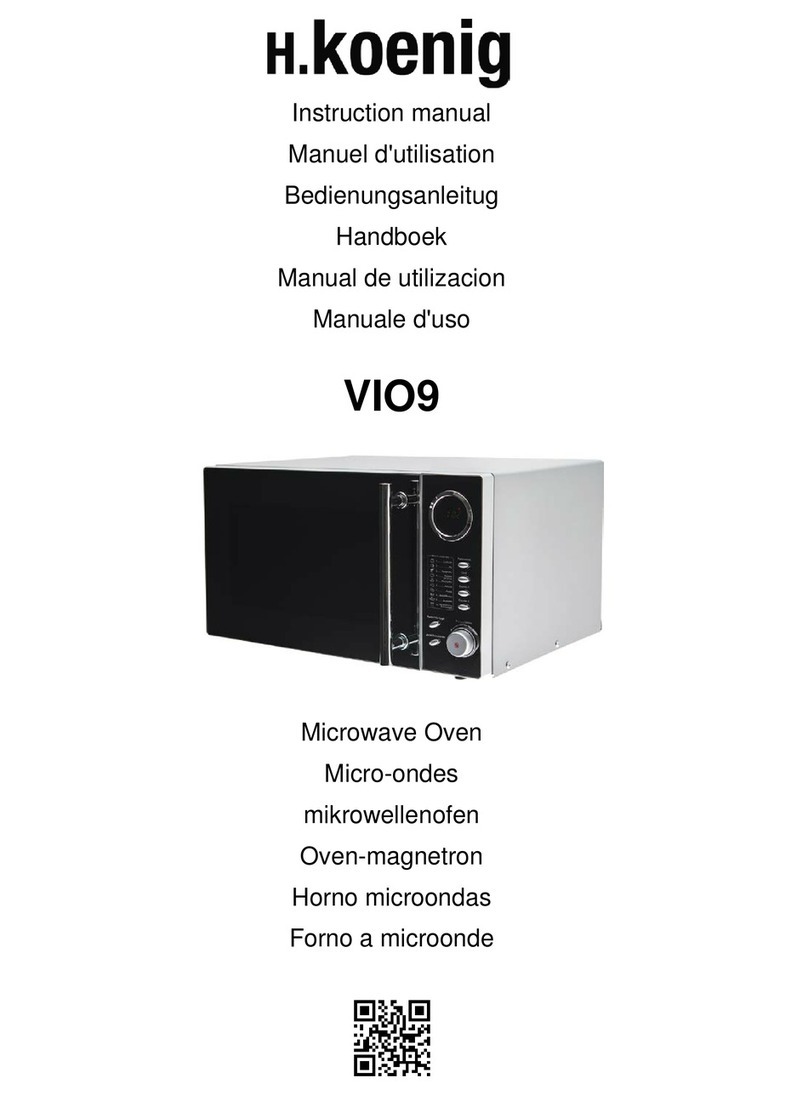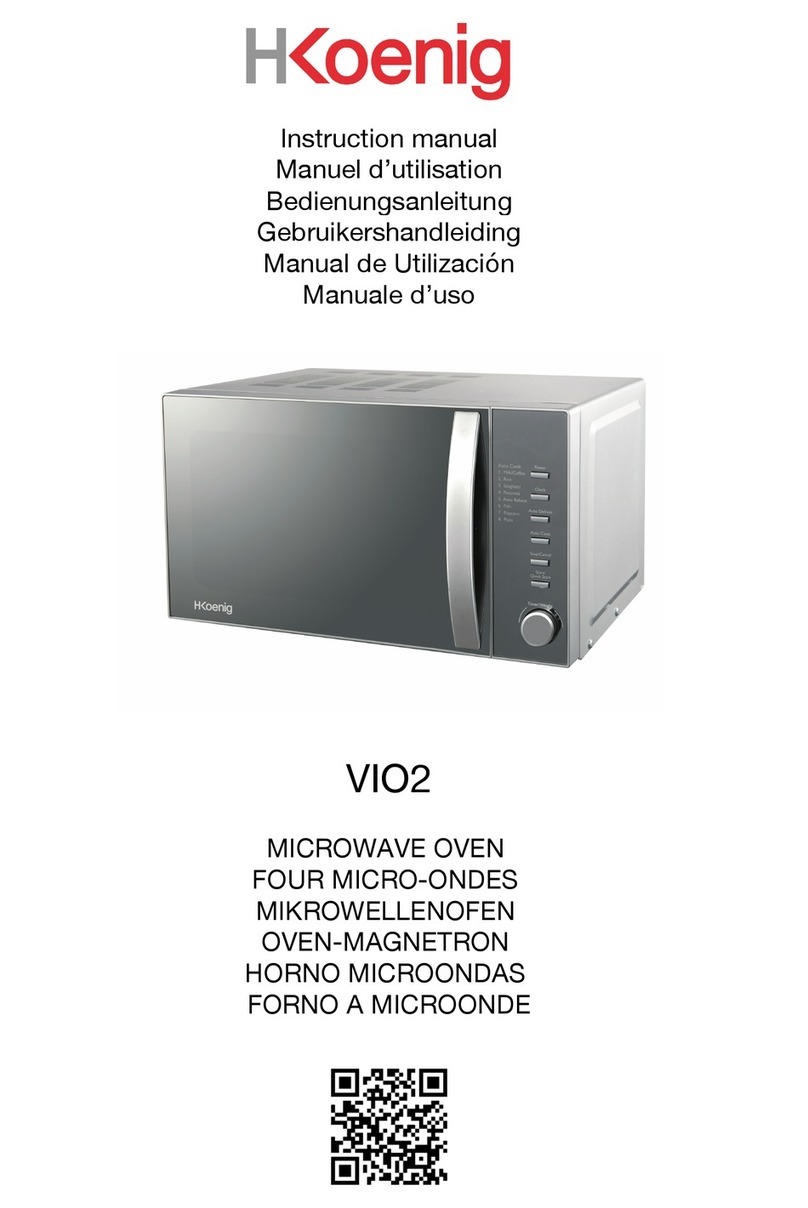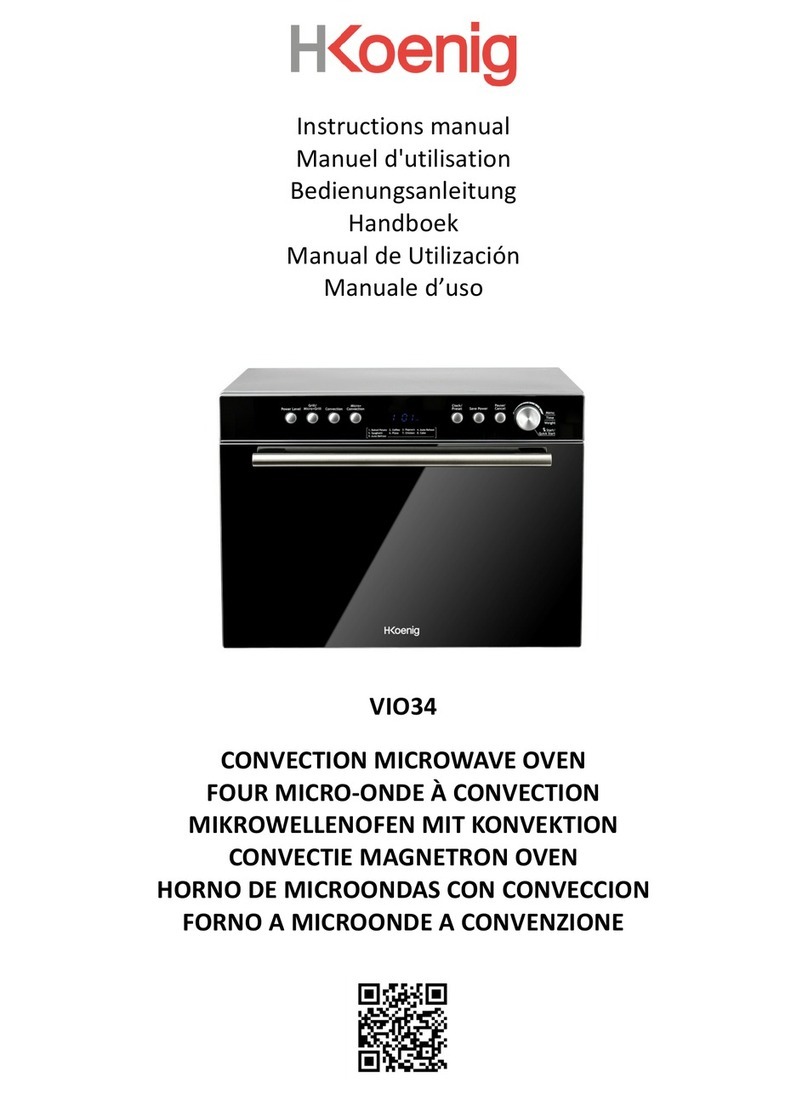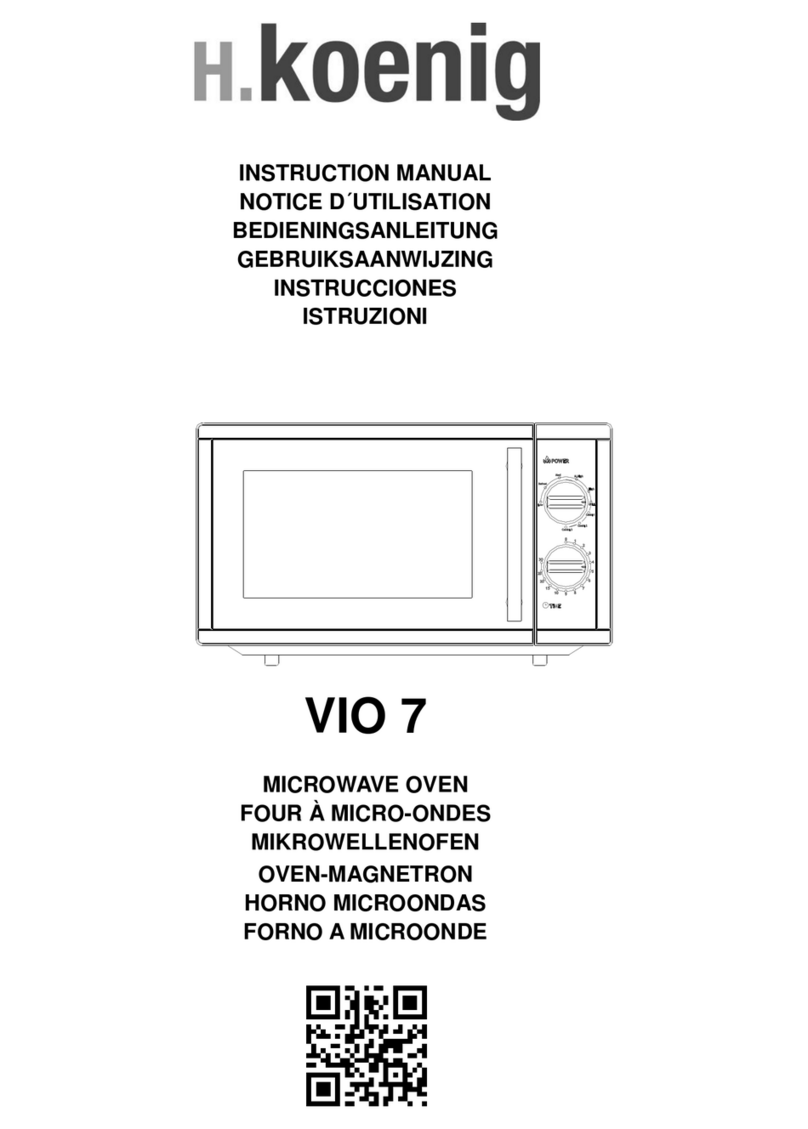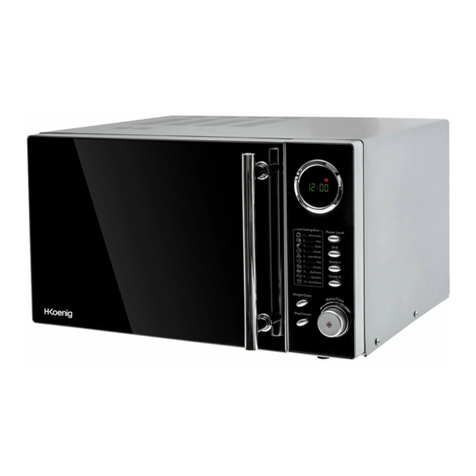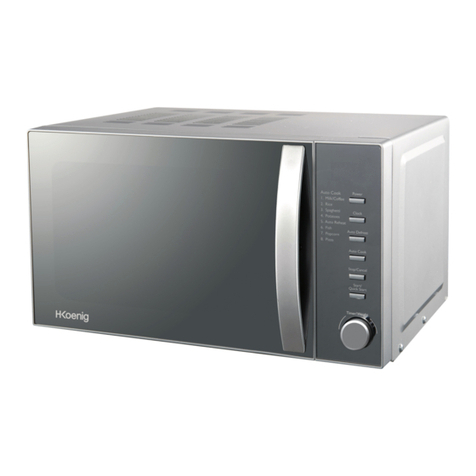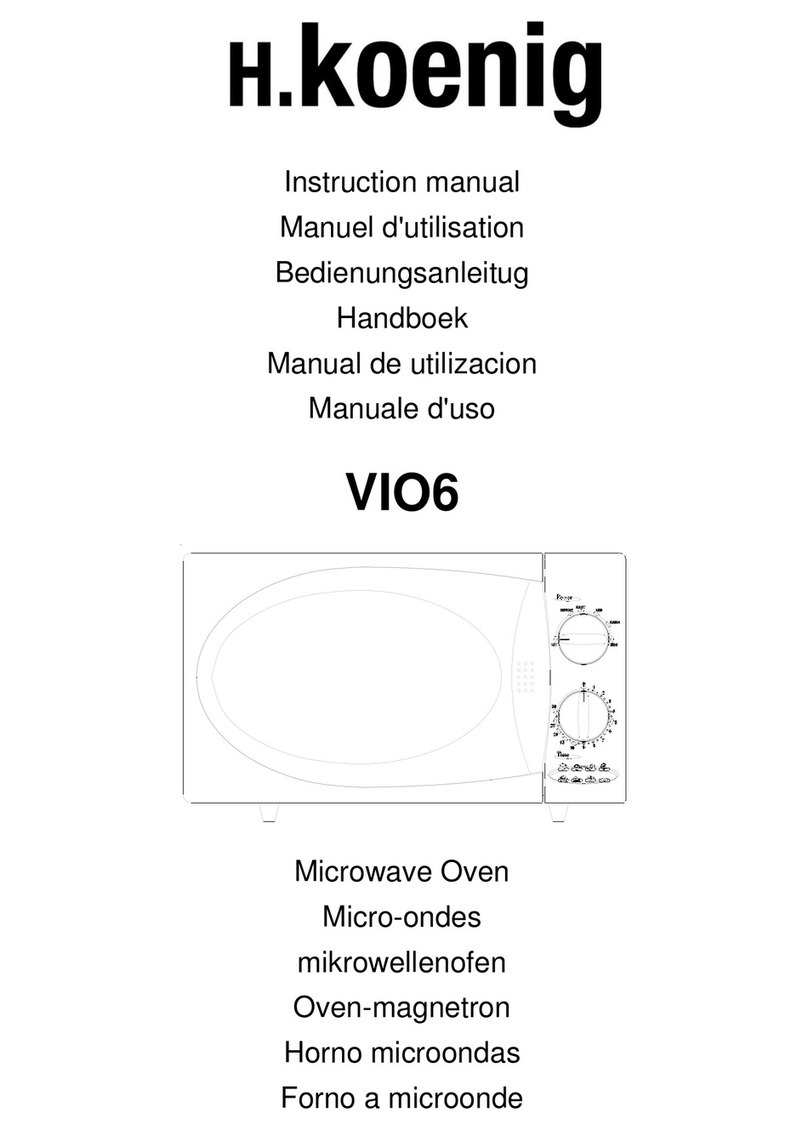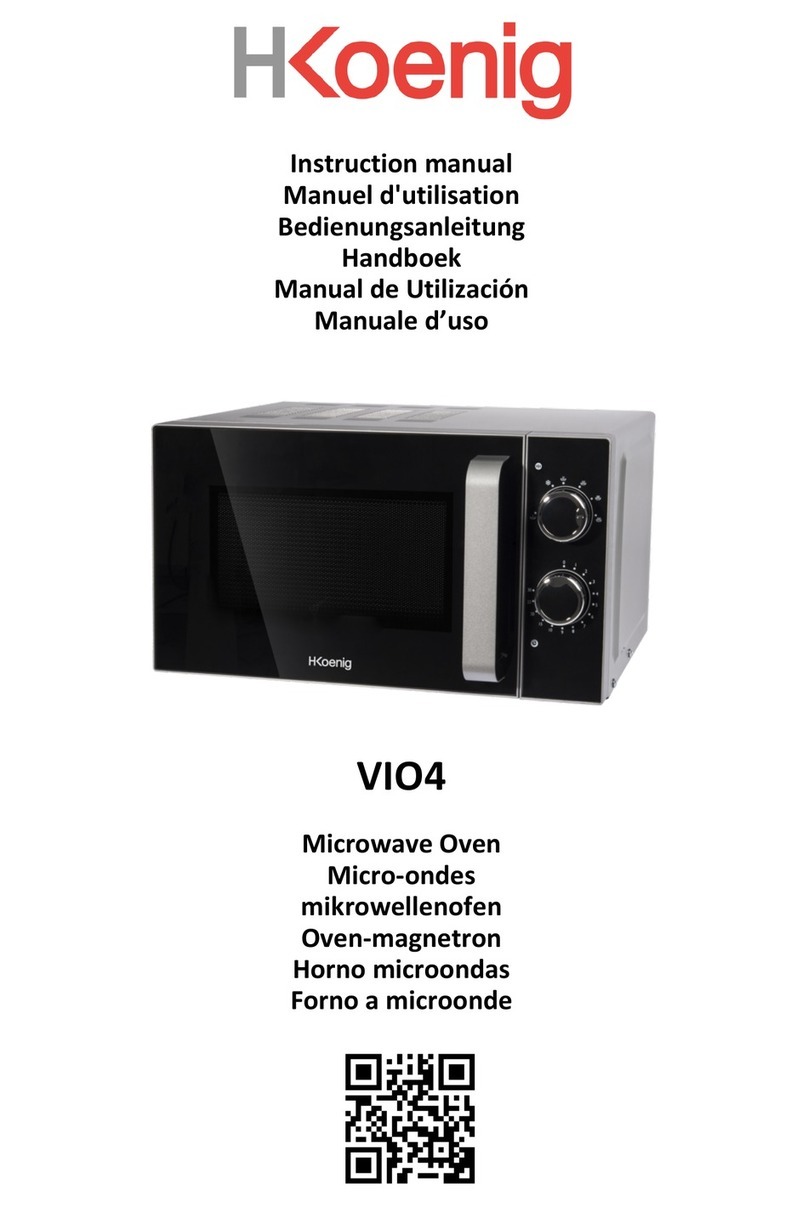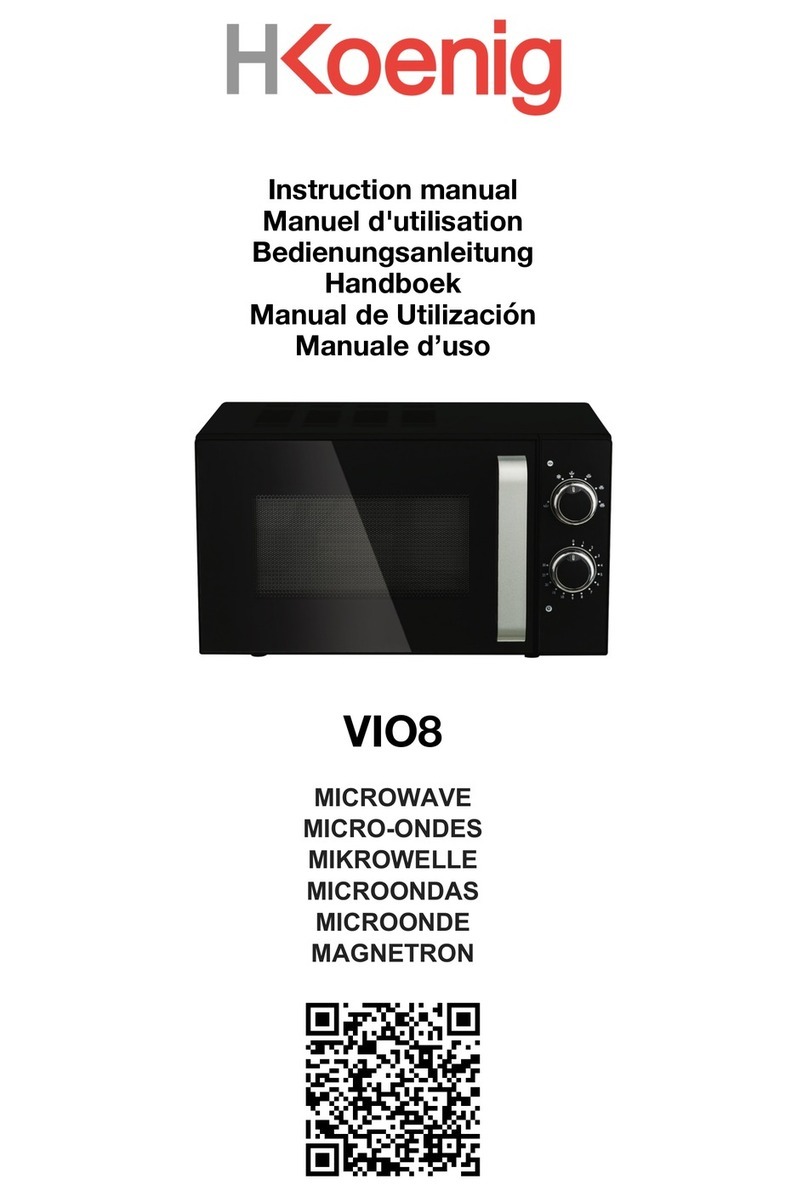
MICROWAVE COOKING PRINCIPLES
1. Arrange food carefully. Place thickest areas towards outside of dish.
2. Watch cooking time. Cook for the shortest amount of time indicated and add
more as needed. Food severely overcooked can smoke or ignite.
3. Cover foods while cooking. Covers prevent spattering and help foods to cookevenly.
4. Turn foods over once during microwave cooking to speed cooking of such foods
as chicken and hamburgers. Large items like roasts must be turned over at least
once.
5. Rearrange foods such as meatballs halfway through cooking both from top to
bottom and from the center of the dish to the outside.
GROUNDING INSTRUCTIONS
This appliance must be grounded. This oven is equipped with a cord having a
grounding wire with a grounding plug. It must be plugged into a wall receptacle that
is properly installed and grounded. In the event of an electrical short circuit,
grounding reduces risk of electric shock by providing an escape wire for the electric
current. It is recommended that a separate circuit serving only the oven be provided.
Using a high voltage is dangerous and may result in a fire or other accident causing
ovendamage.
WARNING Improper use of the grounding plug can result in a risk of electric shock.
Note:
1. If you have any questions about the grounding or electrical instructions, consult
a qualified electrician or service person.
2. Neither the manufacturer nor the dealer can accept any liability for damage to
the oven or personal injury resulting from failure to observe the electrical
connection procedures.
The wires in this cable main are colored in accordance with the
following code: Green and Yellow = EARTH
Blue = NEUTRAL
Brown = LIVE
BEFORE YOU CALL FOR SERVICE
If the oven fails to operate:
1. Check to ensure that the oven is plugged in securely. If it is not, remove the plug
from the outlet, wait 10 seconds, and plug it in again securely.
2. Check for a blown circuit fuse or a tripped main circuit breaker. If these seem to
be operating properly, test the outlet with another appliance.
3. Check to ensure that the control panel is programmed correctly and the timer is set.
4. Check to ensure that the door is securely closed engaging the door safety lock
system. Otherwise, the microwave energy will not flow into the oven.
IF NONE OF THE ABOVE RECTIFIES THE SITUATION, THEN CONTACT A
QUALIFIED TECHNICIAN. DO NOT TRY TO ADJUST OR REPAIR THE OVEN
YOURSELF.






